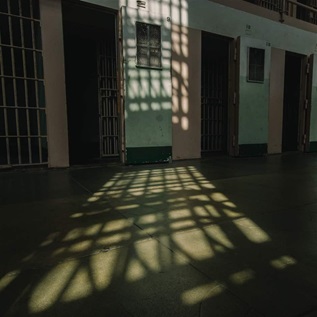Governing Magazine: The Power of Incentives for Performance
Faced with similar fiscal pressures, state and local governments can achieve better results at less cost by restructuring their relationships based on evidence of what works instead of simply cutting budgets or passing financial problems back and forth.
A prime example involves corrections — the second-fastest-growing element in state budgets after Medicaid. Momentum for data-driven corrections reform began building in state capitols even before the Great Recession. Since 2007, 15 states have passed reforms with bipartisan and often unanimous support. In 2012 alone, Georgia, Hawaii, Missouri, Oklahoma and Pennsylvania adopted policies shown to protect public safety, hold offenders accountable and reduce costs.
Performance incentive funding (PIF) is a lesser-known but important part of this broad movement, and it is a particularly useful approach for turning fiscal tension between state and local leaders into a productive relationship. This method addresses a significant structural contradiction in the way most states share responsibility with their local governments for the more than five million adults in America's correctional system.
Counties or cities in those states supervise (and usually bear the costs for) offenders on probation — the largest group under criminal justice control — while states pay for imprisonment. When probationers break the rules, local governments and courts have a strong motive to clear these individuals off their caseloads by revoking probation and passing them on to the state prison system. For local officials, that saves money and minimizes political risks, and it is much easier than finding the dollars to pay for recidivism-reduction programs that use risk and needs assessments, cognitive behavioral therapy, and graduated sanctions and rewards to help probationers stay on track.
In a vicious cycle that promotes neither public safety nor effective use of taxpayer dollars, underfunding of local probation programs contributes to a failure rate of more than 40 percent, which in turn bloats state prisons. In some states, this dynamic has been so powerful that more than half of the offenders entering state prisons have been violators of supervision rules rather than new-crime perpetrators.
PIF programs offer an elegant solution to this problem, and over the past four years they have been implemented in eight states: Arkansas, California, Illinois, Kansas, Kentucky, Ohio, South Carolina and Texas. All of the programs are based on a common assertion that local jurisdictions should be given financial incentives to adopt evidence-based community corrections strategies and should share in the savings when that shift reduces prison commitments and cuts crime.
This adjustment of incentives sets up a win-win-win: States reduce the costs of building and operating expensive prisons; communities receive funding to invest in strong offender-supervision programs; and public safety is improved as a result of reductions in crime, recidivism and probation-revocation rates.
In California, for example, adult probation services were funded only by local dollars, probationer fees and occasional federal grants before the California legislature unanimously passed the Community Corrections Performance Incentive Act in 2009. In 2008, average annual spending to supervise an adult offender on probation was $1,250. Meanwhile the state was spending an average of roughly $50,000 per year — 40 times more — to incarcerate those whose probation was revoked for breaking the rules of community supervision.
In 2010, under the new system that paid counties to invest in proven probation practices, 23 percent fewer probationers committed new crimes or violated the terms of their probation, 47 out of 58 counties reduced their revocation rates, and the state saved $179 million in prison costs. In the same year, the state's violent crime rate dropped faster than in any year
since 1999. In 2011, the state's Department of Finance distributed $87.5 million in incentive payments to the counties to plow back into the evidence-based programs that have been proven to hold offenders accountable and reduce recidivism.
Five years ago, Illinois implemented a PIF program that helped counties achieve a 52 percent reduction in juvenile confinement, with state savings of $19 million. The state recently launched a PIF program for adult corrections that has already reduced prison commitments among nonviolent offenders by 410 in the program's 10 pilot sites, which translates to annual savings of $6.6 million.
The eight existing PIF programs are in various stages of implementation as each state grapples with its own fiscal challenges, and California's has been superseded by a more drastic realignment of state and county corrections responsibilities implemented last year. But results to date clearly demonstrate that when state and local governments work together, they can find solutions that turn vicious cycles into virtuous ones and produce better results at less cost.
Reposted with permission of e.Republic.











